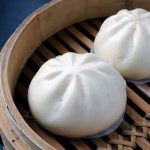In 2014, the American Huffington Post magazine praised and recognized Cao Lau Hoi An as the greatest culinary in Vietnam. At the same time, they also wrote an article about Cao Lau which is in the list of regional specialties that are worth exploring and enjoying. Let’s discover what makes Cao Lau famous and popular in the world!

I. Cao Lau’s origin
Cao Lau dish has existed for a long time but the origin of Cao Lau is still the subject of discussion and is buzzed in many different stories.
Back in the 17th century, when Hoi An was still the busiest port in Asia and the trade meeting of many countries. At that time, many Chinese and Japanese came to Hoi An to do business and make a living, and it was the time that the “delicious delicacy” named Cao Lau appeared. Cao Lau is a match between Japanese and Chinese cuisine, is not it?
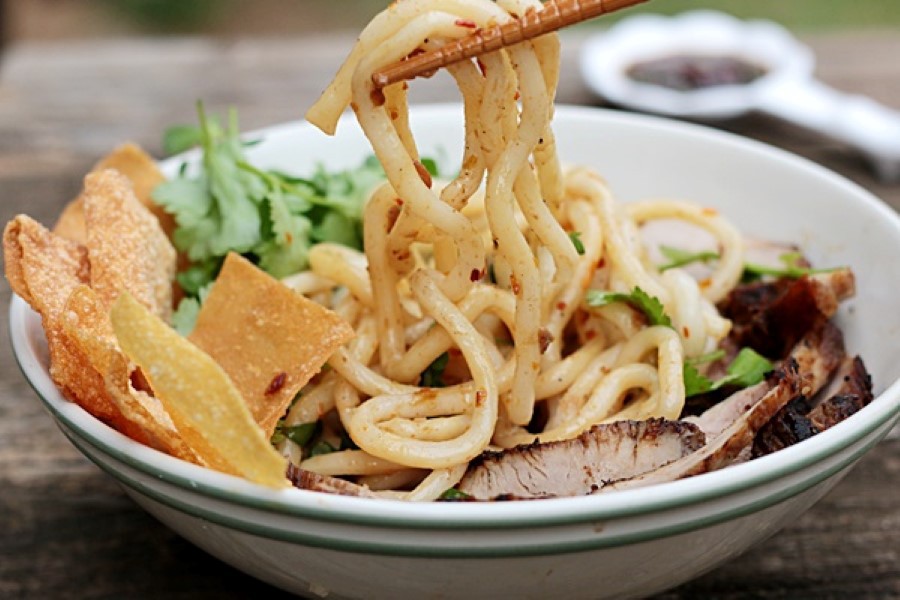
It is generally believed that Cao Lau originated from Japan (because the recipe of Cao Lau is quite similar to Udon Noodles); others think that Cao Lau originated from Chinese cuisine (because it was served with meat and char siu sauce) and then Cao Lau was changed to satisfy Vietnamese people (combining with fried pork skin, baked rice paper, roasted peanuts, basil herb). However, no matter where it originated from, Cao Lau is still a special dish, a specialty of Hoi An city, and become more and more popular in our country and foreign ones.
The origin of “cao lau” name is a question of many diners?
In the past, Hoi An’s restaurants consisted of two floors, and only rich merchants were served on the highest floor, and this dish is often offered by them, leading to the name “Cao Lau”. In addition, some argue that wealthy merchants often had to climb to the highest floor to eat as well as look after their goods. Without any facts, this story has been buzzed for a long time when visitors ask for its name. Therefore, many visitors in Hoi An always choose restaurants with high positions to enjoy Cao Lau and the attractively ancient and peaceful scenery.

The origin and the name “Cao Lau” has been associated with Hoi An for 3 or 4 centuries, this is a reason why The Guardian newspaper (2017)posted an article describing Cao Lau as a delicious dishsymbolizing the Hoi An history just by a bowl of noodles.
II. Decoration and meaning
With a standard Cao Lau dish, we usually see small pieces of char siu meat with pork fat, pork skin or dried Cao Lau which is square, fried and crispy with lettuce, bean sprouts, some herbs, served with a golden sauce broth with a sour, spicy and sweet taste. Tung ho vegetables, bitter herbs, and basil are considered three indispensable vegetables which are from Tra Que vegetable village - Hoi An.
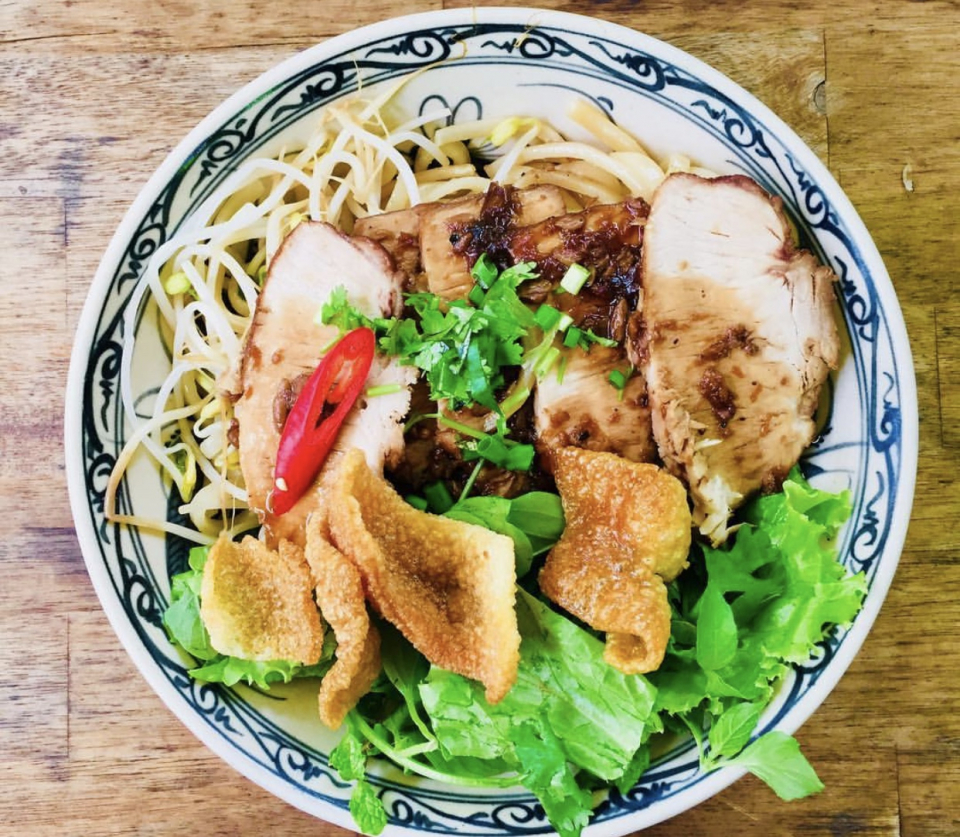
However, visitors who have never tried Cao Lau are easily mistaken as Mi Quang. Because both dishes are mixed foods, a little broth, and a similar decoration. However, the Quang noodles are soft, glossy and longer. The broth for Mi Quang is blander and fuller than Cao Lau. Moreover, about the characteristic of Cao Lau, it is not noodles. Local people often call it “Cao Lau cake”. And only Cao Lau can be eaten with char siu meat.
III. Ingredients and recipe
A Cao Lau bowl consists of 3 parts: Cao Lau noodles, filling and broth. But all ingredients of Cao Lau are elaborately and meticulously processed.
- Cao lau noodles:
Cao Lau noodles are processed meticulously, requiring cooks’ patience and hard work. Unlike pho noodles, chefs must choose the pure rice of Quang Nam to make Cao Lau noodles. In particular, local people do not choose old rice which has been stored for a long time, or the new type of rice to avoid being too dry or too soft.
This rice must be ground into powder before being soaked in ash water. The ash must be made from firewood in Cu Lao Cham, and water which is used to soak rice must be taken from a special well in Hoi An called Ba Le made by the Cham people thousands of years ago, so the noodles will be tough and stronger.
The ratio of mixing ash and water is a secret because if it is too much, the noodles will be mushy; if it is too dried, the noodles will be dry and friable too. After soaking in the ash, the rice flour will have a natural light turmeric color. After that, the rice is ground into flour, the rice water is from Ba Le well (fresh and cool water, not alum). After the rice is ground into flour, you drain and knead into a smooth dough, and roll the dough into 3-4 mm thick pieces and steam. Next, the dough is cut into large vermicelli, steamed 3 times and then dried. After carefully processed many times, Cao Lau can be stored overnight without being spoiled.

People often eat Cao Lau with bean sprouts which are blanched over boiling water is not too soft. Vegetables are taken from the famous Tra Que traditional vegetable village in Hoi An. Many people had the ambition to do Cao Lau elsewhere, but all failed. Some people said that Ba Le well- derived water, the ash of Cham island and vegetables of Tra Que make this specific dish.
- Filling and broth:
According to the standard traditional method, Cao Lau’s fillings are made from only one type: Char Siu pork or Thit Xiu for short. To make delicious fillings, the meat must be lean pork leg, more lean and less fat, marinated with salt, fish sauce, five-spice powder.

The special thing of Cao Lau is that there is no broth, only two or three spoons of sauce are made by Char siu meat, so it keeps the greasy and rich flavor. Those who like to eat rich flavor can add more fish sauce or soy sauce.
Today, Cao Lau is improved and can be eaten with soup made from chicken bones, served with rice paper … And “Cao Lau standard style is available in Hoi An”.
Enjoying Cao Lau without vegetables is really a big mistake. Vegetables that can be served with Cao Lau consisting of 12 types such as aromatic herbs, basil, tung ho vegetables, bitter herbs, coriander, bean sprouts, lettuce, fish mint, young mustard greens, banana flower, cucumber, and sour star fruit. However, there are 3 indispensable ones like tung ho vegetables, bitter herbs, and basil.
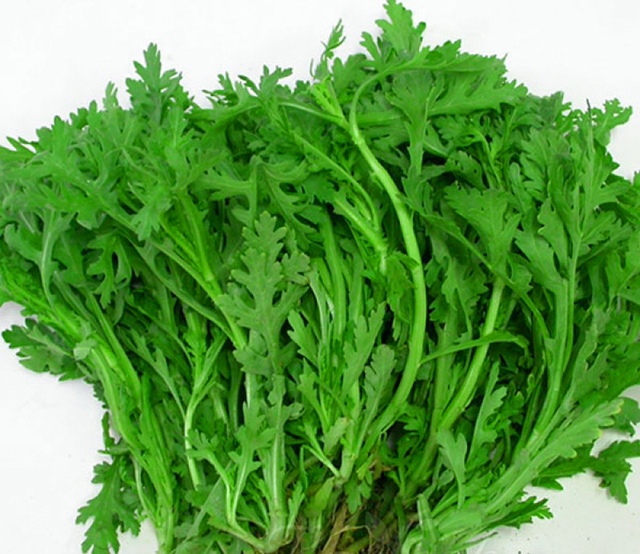
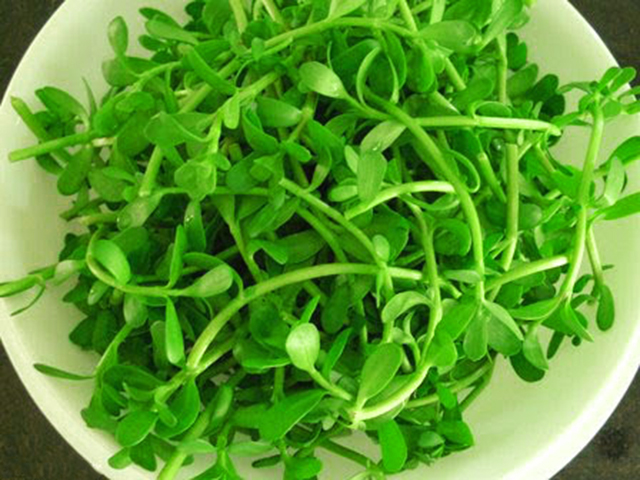

Tung ho vegetables, bitter herbs, and basil are considered three indispensable vegetables for Cao Lau
IV. Addresses and ways to enjoy
Today, with the available popularity, Cao Lau is famous in France, England, Australia, and Saigon, Quang Ngai, Da Nang. But in these places, people seem to find a lack of a taste and a certain feeling. Perhaps due to difference from its origin – Hoi An where used to be famous for this dish, so Cao Lau is lost its taste …

Being different from Quang noodles, Bánh Quai Vạc (Crispy dumplings) or Cơm Gà Hội An (Chicken rice),Cao Lau is available in many places not Hoi An, but enjoying in Hoi An is the best way to feel its original taste. Visiting Hoi An, enjoying pretty and ancient atmosphere and a bowl of Cao Lau are three things helping you feel the essence of the cuisine associating with Hoi An 3, 4 centuries.
To enjoy a standard Cao Lau bowl, you can find some old Cao in the ancient town of Hoi An: Cao Lau Restaurant Lien 9 Thai Phien, Cao Lau Thanh (26 Thai Phien), Cao Lau Hoi An Ba Be (Hoi An food market, Tran Phu) …
V. How to make a Cao Lau Bowl
The traditional recipe is not a secret, but processing a bowl of Cao Lau in the Hoi An style is uneasy and complicated. Let’s explore the Cao Lau recipe of artisans in Hoi An.
1. Ingredients for Cao Lau;
- Cao Lau noodles (you can buy dry or fresh ones)
- Cao Lau sheets
- Pork leg
- Marinating spices: Salt, soy sauce, MSG, garlic, five spice flavors
- Vegetables: vegetables, bitter herbs, basil , young mustard greens, lettuce, bean sprouts, onion…
- Chili sauce
2. Steps to cook Cao Lau
Step 1: Marinate pork

Wash pork leg with salt.
Next, add crushed garlic, salt, soy sauce and some spices to a bowl. Then use a spoon to mix the ingredients together.


Marinate spices with pork for 1 hour to absorb the spices.
Step 2: Fry pork


Add cooking oil and wait until it is hot, fry pork over medium heat. When frying, you cook 2 sides evenly. When the pork turns into golden color, place into a pot to cook.
Step 3: Simmer the pork

Put the meat into a pot, pour the oil from the pan, then pour marinated mixture and boiling water to cover the surface of the meat.
Put the pot on the cooker and cook over medium heat, simmer until the meat is cooked, you add seasonings. Then divide the broth into 2 parts, one part is used to add into Cao Lau. Next, continue simmering the pork with the rest of the water until it turns into paste, the meat is covered with an eye-catching color.

When the meat cools down, slice it to add into Cao Lau.
Step 4:
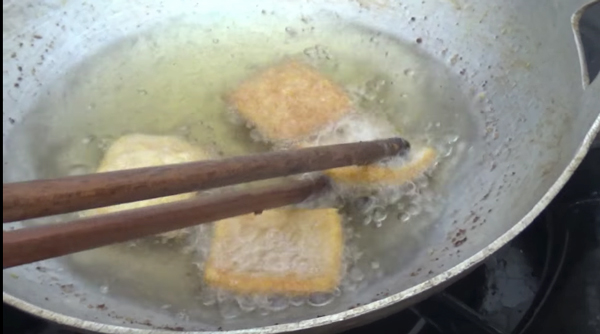
Put the pan on the cooker, add cooking oil and boil it, add dried Cao Lau and fry until it turns into crispy and golden.
Step 5:
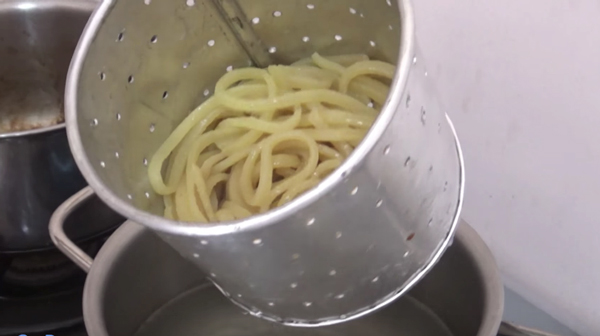
Put a bowl of water on the cooker, boil it and add fresh Cao Lau and bean sprouts, then ladle it out (if you use dry Cao Lau, you should soak it into water for 1 hour and then take this step).
Then, you add char siu meat, fried Cao Lau sheets, chili sauce and lettuce, spread the broth and mix well.

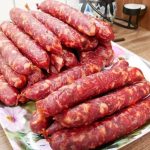
![[Authentic] Com ga Hoi An Recipe – How to make Hoi An Chicken rice](../wp-content/uploads/2020/09/Hoi-An-chicken-rice-recipe–How-to-make-Hoi-An-Chicken-rice-2-150x150.jpg)

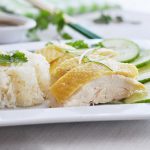

![[Exclusive] Mi vit tiem recipe-Braised Duck with Egg Noodle Soup](../wp-content/uploads/2019/05/Mi-vit-tiem-recipe-Braised-Duck-with-Egg-Noodle-Soup-1-150x150.jpg)
